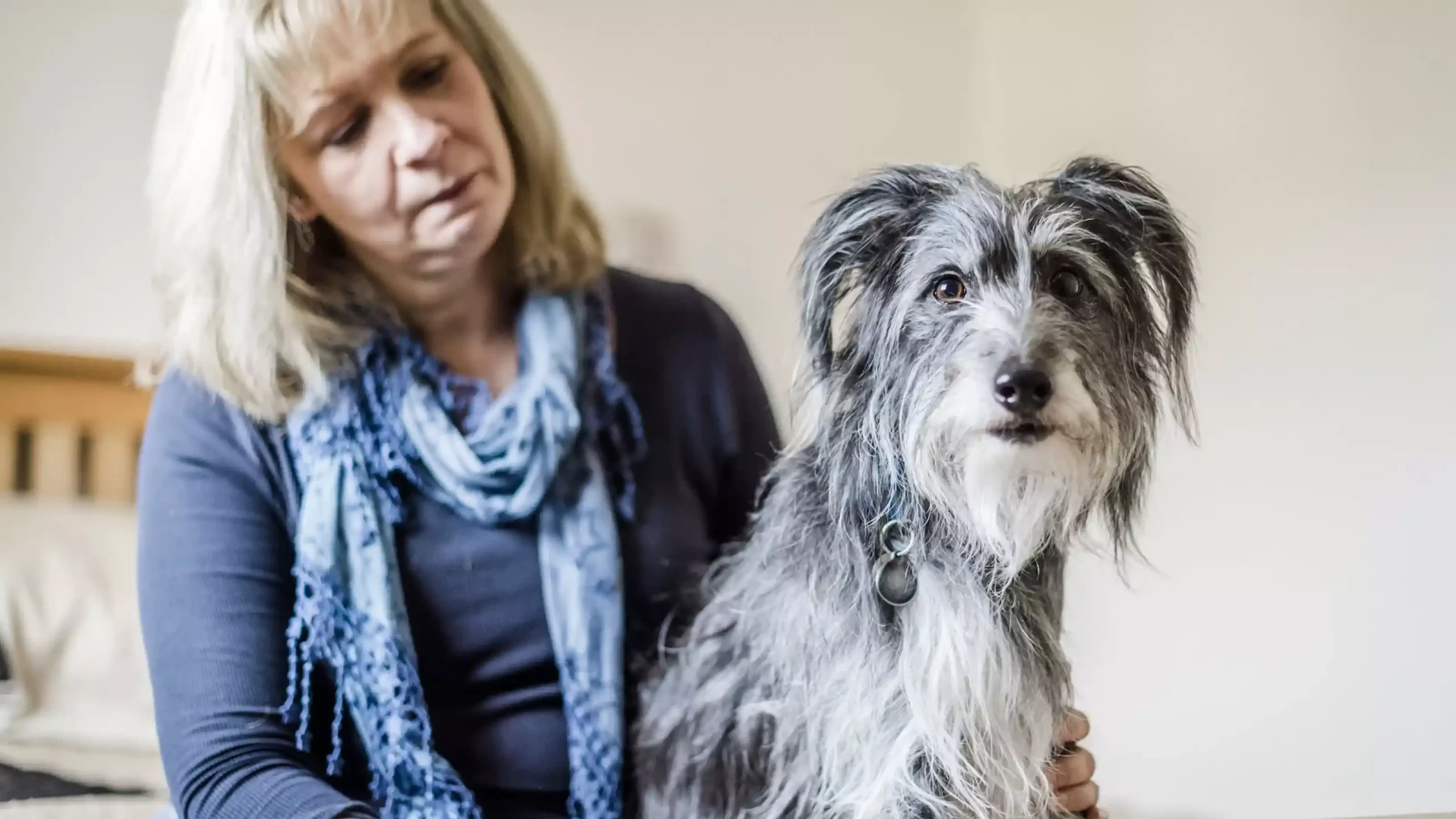The decision to euthanize a beloved dog is one of the most challenging choices an owner may face, often accompanied by profound emotional turmoil. Understanding the euthanasia process is vital, particularly in addressing concerns about pain and suffering. While the procedure is designed to be gentle and compassionate, many owners grapple with questions about their pet’s experience during this final act of love. As we explore the intricacies of dog euthanasia, we must consider not only the mechanics of the process but also the emotional landscapes that accompany such a decision. What truly lies behind the concept of a peaceful farewell?
Key Takeaways
- Euthanasia is designed to be a painless process, prioritizing the pet’s comfort and dignity during their final moments.
- A calming sedative is administered first to minimize stress before the final anesthetic agent is given.
- The procedure often occurs in a familiar environment, helping to ease anxiety for the pet.
- Veterinarians ensure the process is gentle and compassionate, focusing on alleviating suffering.
- Owners can provide comfort to their pets by being present, offering reassurance during the euthanasia.
Understanding Dog Euthanasia
Understanding the profound and often heart-wrenching decision of dog euthanasia requires a compassionate approach that acknowledges the emotional weight it carries for pet owners. This decision often arises in response to terminal illness, unmanageable pain, or a significant decline in quality of life. The process can feel overwhelming, as it involves not just the health aspects of a beloved pet, but also the deep emotional bonds forged over years.
Many pet owners grapple with guilt, fear, and sadness, questioning if they are making the right choice. It is vital to recognize that euthanasia is often considered an act of love, aimed at alleviating suffering. Conversations with veterinarians can provide clarity, as they offer insights into the pet’s condition and prognosis, helping owners make informed decisions aligned with their pet’s best interests.
When considering the question, “Is dog euthanasia painless?“, it is important to remember that veterinarians are trained to guarantee the process is as peaceful and humane as possible. Ultimately, the goal is to provide a dignified farewell, allowing pet owners to honor the cherished companionship they have shared.

The Euthanasia Process
Once a decision is made regarding dog euthanasia, the euthanasia process itself is a vital aspect to comprehend. This deeply emotional step is designed to be as compassionate and serene as possible, both for the pet and their owner. Typically, the procedure begins with a thorough consultation with a veterinarian, who will explain the process in detail and address any concerns you may have.
The euthanasia is usually performed in a familiar, comfortable environment, whether at the veterinary clinic or at home. A calming sedative is administered first, allowing your dog to relax and feel at ease. This initial step guarantees that your pet experiences minimal stress and fear. Following this, a final anesthetic agent is given, which gently stops the heart.
Throughout the process, your presence can provide comfort and reassurance to your pet. Many owners choose to hold their dog, whisper loving words, or simply stay close. Understanding the euthanasia process is essential in answering the question, “Is dog euthanasia painless?” The goal is to guarantee a peaceful change, free from suffering, allowing you both to say goodbye with love.
Pain Management Considerations
When contemplating dog euthanasia, addressing pain management considerations is essential for ensuring your pet’s comfort during this difficult time. It is important to recognize that your furry companion may experience varying levels of discomfort due to their illness or condition. Engaging with your veterinarian to develop a tailored pain management plan is necessary, as they can recommend appropriate medications and dosages based on your dog’s specific needs.
Pain relief options may include non-steroidal anti-inflammatory drugs (NSAIDs), opioids, or other analgesics designed to enhance comfort. Additionally, discussing the timing of euthanasia with your veterinarian can help align the procedure with your pet’s pain levels, ensuring they are as peaceful as possible.
In some cases, sedation may be administered prior to the euthanasia procedure. This can help alleviate anxiety and discomfort, allowing for a smoother changeover. Remember, the goal is to provide a compassionate and dignified farewell, giving your beloved pet the peaceful passing they deserve.
Emotional Support for Owners
The emotional toll of deciding on dog euthanasia can be overwhelming for pet owners, especially after addressing pain management considerations for their beloved companions. This decision often brings with it a profound sense of loss, guilt, and sadness. It is important for pet owners to recognize that these feelings are valid and shared by many who have faced similar circumstances.
Seeking emotional support during this challenging time is essential. Talking to friends or family members who understand the bond between you and your pet can provide comfort. Additionally, consider joining support groups, either in person or online, where you can connect with others who have experienced similar grief. These communities can offer invaluable insights and a sense of belonging.
Professional counseling can also be beneficial, as a therapist familiar with pet loss can help navigate complex emotions. Engaging in self-care practices, such as journaling or meditation, can foster healing. Remember, the question “Is dog euthanasia painless?” extends beyond physical aspects; addressing the emotional landscape is equally important. Ultimately, allowing yourself to grieve and seeking support can lead to a path of understanding and acceptance, honoring the cherished memories of your faithful companion.
Alternatives to Euthanasia
Exploring alternatives to euthanasia can be a crucial step for pet owners facing difficult decisions about their dog’s health and quality of life. Many owners find themselves grappling with the emotional weight of such decisions, seeking options that prioritize their pet’s comfort and well-being while allowing for a more extended companionship.
Palliative care is one alternative that focuses on providing relief from pain and other distressing symptoms without hastening death. This approach may involve medications, dietary adjustments, and changes in living conditions to enhance your dog’s quality of life. Additionally, holistic therapies such as acupuncture, physical therapy, and massage can offer comfort and improve mobility in aging dogs.
Another option is hospice care, which allows families to provide a loving environment during the final stages of life. This can include emotional support, pain management, and end-of-life planning tailored to your dog’s specific needs.
Ultimately, discussing these alternatives with your veterinarian can help you make the best decision for your beloved pet. Understanding that euthanasia is not the only choice can bring peace of mind while ensuring your dog receives the love and care they deserve.
Frequently Asked Questions
What Are the Signs That My Dog May Need Euthanasia?
Signs that your dog may need euthanasia include persistent pain, loss of appetite, difficulty breathing, inability to stand or walk, and diminished quality of life. Consulting with a veterinarian can provide clarity during this difficult decision.
How Can I Prepare Myself for My Dog’s Euthanasia?
Preparing for your dog’s euthanasia involves creating a peaceful environment, discussing feelings with trusted friends or professionals, and considering special moments to share with your pet. This compassionate approach can provide comfort during a difficult time.
Can I Be Present During My Dog’s Euthanasia?
Yes, you can be present during your dog’s euthanasia. Many veterinary practices encourage owners to stay, providing comfort to both you and your pet, ensuring a peaceful and compassionate farewell during this difficult time.
What Happens to My Dog’s Body After Euthanasia?
After euthanasia, your dog’s body is typically handled with care and dignity. Options include cremation, burial, or return to the owner. Discussing these options with your veterinarian can help guarantee a respectful farewell for your pet.
How Can I Honor My Dog’s Memory After Euthanasia?
Honoring your dog’s memory after euthanasia can be achieved through memorializing rituals, such as creating a scrapbook, planting a tree, or establishing a donation in their name. Each act fosters connection and cherished remembrance within your heart.
Conclusion
In summary, dog euthanasia is designed to be a compassionate and painless process, prioritizing the comfort of the pet during its final moments. Understanding the procedure and its implications can aid in making informed decisions that reflect love and care. Ensuring effective pain management and providing emotional support for both the pet and owner are essential components of this journey. Ultimately, euthanasia serves as a dignified option to alleviate suffering and honor the bond shared with a beloved companion.
Also Read: Benefits of Sobriety During Retirement

